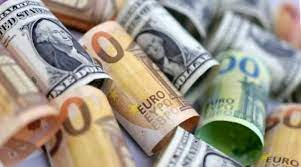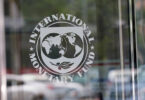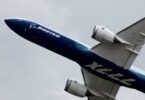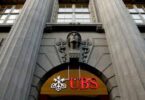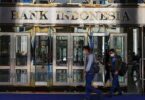SINGAPORE (Reuters): The dollar gained against the euro after the European Central Bank eased its pace of rate hikes, a day after the Federal Reserve hiked rates by 25 basis points and indicated that it may pause further increases.
The ECB’s 25-basis-point increase was the smallest since it started lifting them last summer, but the bank also signalled that more tightening would be needed to tame inflation.
“The ECB was relatively dovish, the tone is a little more cautious, and there is a bit more focus on the past effects of tightening and the fact that these are being transmitted forcefully to the euro area economy,” said Sebastian Vismara, global macro economist and strategist, BNY Mellon Investment Management.
The Fed on Wednesday dropped from its policy statement language saying that it “anticipates” further rate increases would be needed.
The dollar index was last up 0.30% on the day at 101.52.
The index is holding just above a one-year low of 100.78 reached on April 14, and has fallen from a 20-year high of 114.78 on September 28.
The euro fell 0.52% to $1.1004. It reached a 13-month high of $1.1096 last week. The dollar also fell 0.33% to 134.18 Japanese yen.
The single currency has gained against the greenback in recent months as investors priced for the dollar’s interest rate advantage over the single currency to continue to decline.
But analysts said that much of that expected move may already be priced in, with the next focus likely to be when the US central bank will start cutting rates.
“The monetary policy dynamics are more or less fully priced in here at this point in terms of the tightening cycle, now it’s going to be a focus on the bets on when the Fed starts to ease, how much it eases and how that relates to what (other) central banks are doing,” said Shaun Osborne, chief FX strategist at Scotiabank in Toronto.
Money markets are now pricing in around a 15% chance the Fed will begin cutting rates in June, and expect roughly 80 basis points of rate cuts through to the end of the year.
Adding to the argument that the Fed will soon begin easing monetary conditions were lingering fears of banking sector turmoil, intensified by news that PacWest Bancorp (PACW.O) is exploring strategic options. The Los Angeles-based lender said it has been approached by several potential partners and investors.
The greenback also got a boost on Thursday after data showed that US Unit labor costs – the price of labor per single unit of output – surged at a 6.3% rate in the first quarter, after increasing at a 3.3 percent pace in the fourth quarter.
“That gave the dollar a bit of a push up because it came in quite a bit higher than expected and it’s not really commensurate with the Fed on hold story,” said Osborne.
This week’s main US economic focus will be Friday’s jobs report for April, which is expected to show that employers added 180,000 jobs during the month, while average earnings are expected to have increased at an annual rate of 4.2%.
Sterling dipped 0.06% to $1.2561 after hitting $1.2593 earlier on Thursday, the highest since June 2022.
The greenback was last down 0.17% against the Norwegian crown at 10.73 after Norway’s central bank raised interest rates by 25 basis points as expected.

